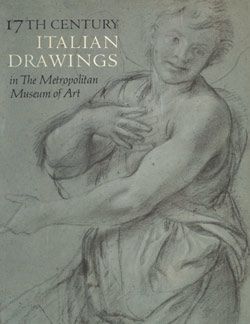God the Father with Angels Holding Symbols of the Passion
Pietro da Cortona (Pietro Berrettini) Italian
Not on view
Full of light and movement, this monumental study offers an early design for a portion of the dome fresco, painted by Pietro da Cortona between 1647 and 1651, of the church of Santa Maria in Vallicella ('Chiesa Nuova') in Rome. This confident drawing is a preparatory study for the central section of the fresco, though the artist introduced a number of changes to the finished design.The relatively faint articulation of the figures in the upper parts of the drawing corresponds to the greatest intensity of pictorial light in the fresco, which is unified with the real source of light that emanates from the lantern of the dome.
The artist must have produced numerous drawings such as this one in order to think through the illusionism of the enormous dome fresco with its magical effects of light and sharply foreshortened figures (which exhibit a remarkable articulation of detail for such a large painting). There are many differences of design between the finished fresco and this preparatory drawing in which angels hold palm branches, Veronica's veil, and the column of the Flagellation. The subject of the fresco - the Trinity in Glory and the Glorification of Christ's Instruments of the Passion - held special significance in the devotional practices of the Counter-Reformation Saint Philip Neri and the Filippine order, patrons of the Chiesa Nuova. Walter Vitzthum identified pen and chalk drawings by Cortona for the dome in Edinburgh, Vienna, and Paris, while Eckhard Schaar published a study for the figure of God the Father at Düsseldorf (se here 'references'). Nicholas Turner suggested that a pen and ink sketch (private collection, London) is a study for the figures of Abraham, Isaac, and Adam in the dome fresco.
This image cannot be enlarged, viewed at full screen, or downloaded.



